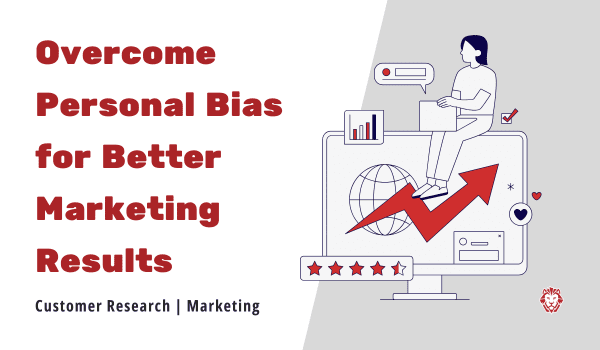
Should Retailers and Brands Sell on Amazon?
By now, everyone knows that Amazon is big. Big enough that there’s no ignoring the eCommerce behemoth- no matter how vehemently some marketers and retailers might wish they could. But should retailers sell on Amazon? That’s another question entirely. On Episode 14 of the Lion’s Share Marketing Podcast, Samsonite/TUMI’s Charlie Cole recalled a quote from a friend that likened Amazon to the cute, friendly tiger cub that eCommerce brands can’t resist feeding now- but to remember that the tiger cub is going to grow up and eat the entire lot of us.
At Fidelitas, we don’t have quite a doomsday viewpoint of retailers’ chances against Amazon. The brands that are slow to adapt will suffer and, if they don’t learn their lesson, eventually collapse under the weight of Amazon’s burgeoning market share. Retailers must learn to adapt to the new rules of the eCommerce game and integrate Amazon into their marketing strategy. But before diving in head-first into a new seller account and shipping product to a fulfillment center, retailers and the marketing leaders responsible for stewarding their brands should ask themselves a few questions:
Is my product the first of its kind? If you’ve truly got a unicorn on your hands, you’re likely best served to avoid selling through Amazon and instead focus on selling direct-to-consumer through your own website, as well as through traditional brick-and-mortar retailers. Why brick-and-mortar retailers and not Amazon? Marketing leaders and entrepreneurs need to remember that Amazon is user-focused and search-based, meaning that unless someone is actively searching the platform for your product, you’re not likely to move significant amounts of product. At least with brick-and-mortars, you’ll be rewarded with exposure to new customers through shelf space as a trade-off for your lowered margins. The game changes with a strong PR campaign though. If your product is going to be featured on a national TV show or you have a significant influencer campaign approaching, you’ll want to make sure that your brand’s products are available through as many channels as possible in order to accommodate the influx of customer demand. If your brand is receiving or plans to receive significant exposure, selling on Amazon and other third party platforms is a must!
Do I control production and distribution of my products?
For product manufacturers, differentiating their brand’s products on Amazon isn’t much different than differentiating their products for big box discount stores like Costco or Sam’s Club. Simply changing the product counts in packaging (kudos to brands like Halo Top and Perfect Bar for figuring this out) and color configurations is often enough to create a unique SKU that satisfies those retailers’ buyers. Likewise, merchants can protect the pricing integrity of their own websites by limiting the SKUs that they make available through third party sites like Amazon. In this case, we recommend offering limited product availability through Amazon.
Is my product already for sale on Amazon through third party vendors?
This one’s tough. I’ve personally spoken with merchants that have seen pallets of their product offloaded to third party vendors that operate without MAP restrictions on pricing. These third party vendors often turn around and list the product on sites like Amazon for less than what it cost to make the product in the first place! While grocers and food manufacturers are somewhat protected from this by their products’ limited shelf life, soft goods and other non-perishable products are especially vulnerable.
Other eCommerce retailers that buy common goods from household brands are already competing with Amazon whether they realize it or not. A solid majority of cart abandonment for almost any site can be attributed to Amazon Prime members confirming that the same item is available on Amazon for the same price (or slightly cheaper), with free-shipping two-day to boot.
In these cases, we recommend to list your commodity products on Amazon. Even if you’re not the cheapest option, if you can offer reasonable pricing, fast shipping, and strong customer service your brand will still be positioned to pick up new customers and introduce them to your brand (and your own site).
Pro Tip: Win over customers for the first time by going above and beyond to “surprise and delight” them. Every first impression is an opportunity to convert a one-time buyer into a life-time customer.
Does my eCommerce site integrate with Amazon?
Many eCommerce platforms, including Magento and Big Commerce, integrate with Amazon to simplify the listing automation process. While we still recommend optimizing your Amazon listings, working with an eCommerce platform that integrates with Amazon is a great first step.
Is my product being knocked off by counterfeiters on Amazon?
The only thing more frustrating for retailers and their marketing leaders than being undercut on price is being undercut on price by counterfeiters. Oftentimes the best way to fight counterfeiters on third party sites like Amazon is to bring the fight to them. Once marketing leaders sign up to sell on Amazon, they can take advantage of the tools within Amazon’s Brand Central to differentiate their brands’ products from the knock-offs- all while offering a legitimate alternative to Amazon shoppers in search of your brand’s products.
While there’s no clear-cut answer about the best time to sell on Amazon, these questions give marketing leaders and their teams a great starting point for conversations around third party selling. Regardless of what third party platforms brands and marketing leaders utilize, they should always offer strong, user-friendly eCommerce sites built with a mobile-first mindset.
Need help making sense of your eCommerce strategy? Fidelitas is here to help! Contact Us to see if you qualify for a complimentary digital marketing audit!



